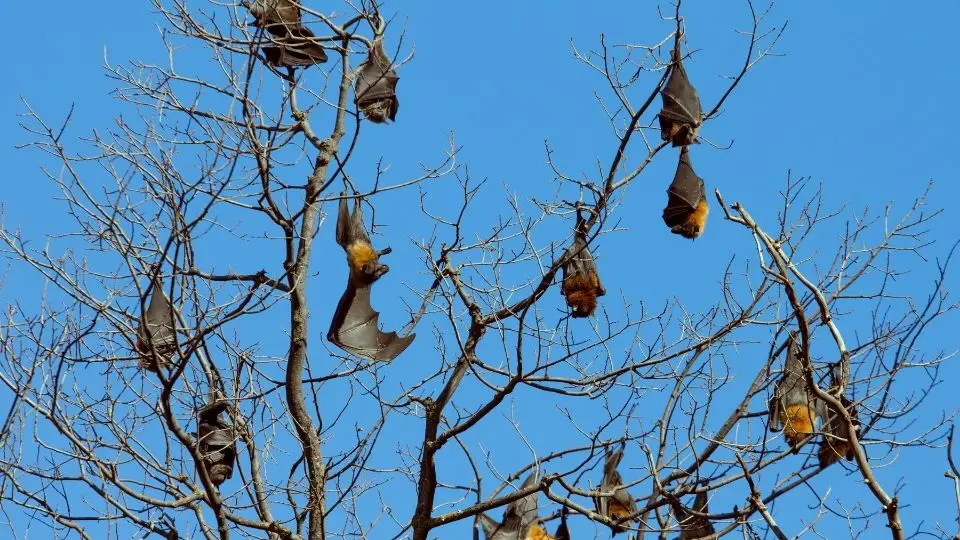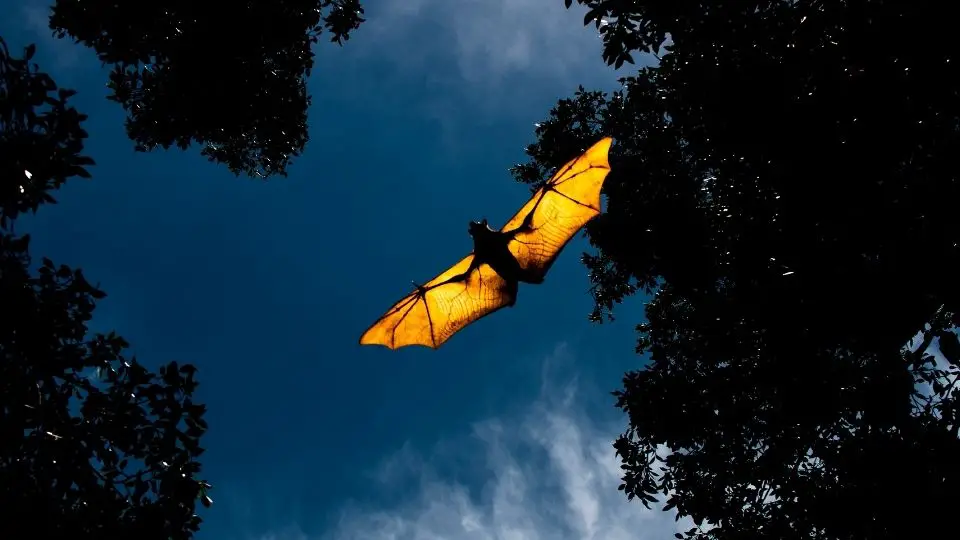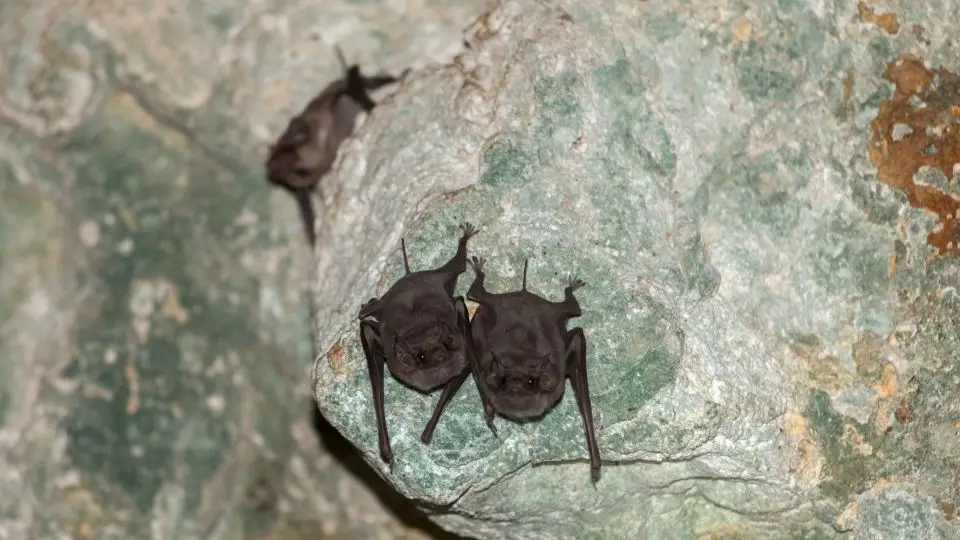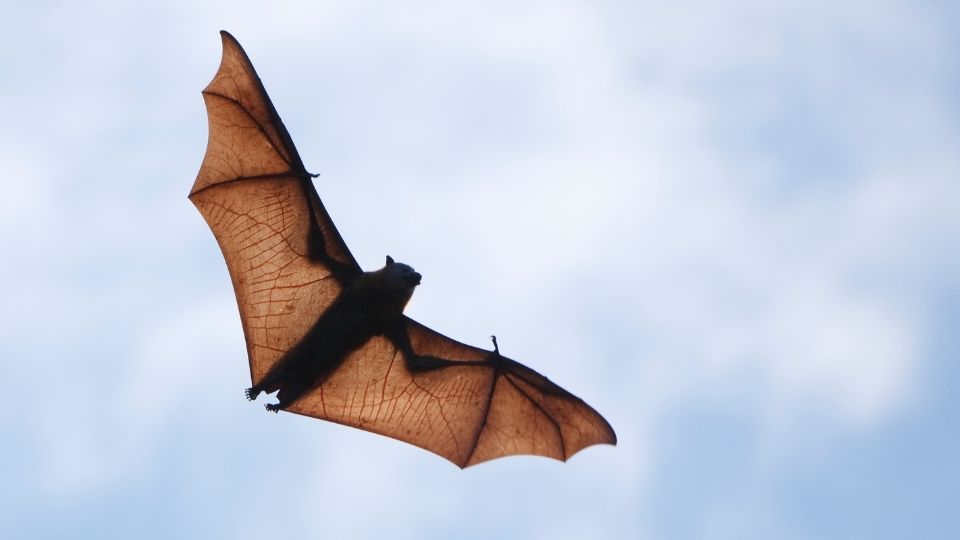Bat sounds are known as clicks and are produced by numerous mechanisms such as voice box, nostrils, tongue clicking, vocal cords, and larynx.
Many homeowners ask a common question when they suspect bats in their house: “What does a bat sound like?” Bats can sometimes sound like birds or squirrels.
Bats produce these sounds and listen to the resulting echoes to paint a clear picture of their surroundings in total darkness. This process is referred to as echolocation, and bats use it to move around without visual assistance.
Let’s look at what a bat sounds like.
Table of Contents
What is the sound of a bat?
Bats produce different components with high ultrasonic frequencies that are too high for human beings to hear. The bat calls have varying elements, with frequency changing over time or remaining constant.
Different bat species have other calls, but generally, these sounds are known as clicks. However, these sounds are more like a bird’s chirp with noticeably varying tones when slowed down.

What do bats in your house sound like?
Although the sounds are virtually impossible to hear outdoors, the echolocation noises can be heard in insulated houses. Moreover, homeowners might hear flapping and scratching sounds from the bats inside the attics and other home areas.
You’ll most likely hear bat sounds in the early morning or at night. That’s when these pests leave their roost or come back from searching for food.
The noises you’ll often hear are made from the bats’ movements as they flutter their wings. They also use these wings as hands to crawl and climb so you may hear some scratching on the walls.
Can you hear bats squeak?
Bats usually make around two or three times more ultrasonic sounds than human hearing. Humans can only hear sounds from around 20 to 20,000 Hertz.
However, bat sounds can be recorded using bat detectors armed with specialized microphones that can record and translate the bats’ ultrasonic sounds that humans can hear.
Below are several ways that bat detectors use to record bat sounds:
Time expansion
The higher frequencies happen at higher rates. The time expansion detectors usually slow the incoming bat sound to audible sounds.
Frequency division
As previously mentioned, bat sounds have two or three times higher frequencies than humans can hear. The frequency division detectors divide these sounds by ten to lower them to a range humans can hear.
Heterodyning
Heterodyning detectors mix the incoming bat sound with an akin frequency. This makes it into a beat that human beings can audibly hear.
Advantages of ultrasonic sounds
Ultrasonic sounds use less energy to make. They dispel quickly, allowing the bat to tell the difference between newer and older sounds that could be echoing within.
These shorter wavelengths make it likely to bounce back to the bat, instead of bending around objects or diffracting.

Do bats make a noise at night?
Scratch and rustle are the most common bat noises.
You can hear scratching and rustling noises from bats which can be confused with squirrel noises. This occurs as the bats move around, for instance, entering or exiting the house to look for food.
According to their behaviors and biology, squirrels‘ movements cause noises that distinguish them from bats. For instance, squirrels, rats, raccoons, and mice have feet and legs that make pitter-patter or scurrying sounds.
On the other hand, birds make noises by fluttering their wings or pecking. That is in addition to birds’ day time musical and melodic songs and tweets.
Other signs of bats roosting in your house
While you may not hear bat noises, there are other clues of bats residing in your house.
These include:
- Bat droppings, also known as guano
- Oil streaks: Bats are oily critters that deposit oil streaks on surfaces
- Live or dead bats
- Bat smell: Bats emit a distinctive and often pungent odor

What to do if you identify bat sounds in your house?
Bats are essential animals to have around as they control the insect population, especially mosquitoes on your property. However, a colony of bats in your home can result in grave problems.
Bat droppings carry a fungus that can result in histoplasmosis, a type of fungal pneumonia. Bats are also believed to carry rabies and other serious health complications.
Moreover, their droppings are corrosive, smelly, and can lead to structural issues with your property. So, if you hear bat sounds in your home, it’s crucial to call in a pest control expert.
Eliminating bats can be daunting as they’re a protected species in most states. Besides, injuring or killing bats and damaging their habitat is illegal.
So, calling a wildlife removal professional or company is the best way. They can safely and humanely get rid of the bats using a variety of methods.
They do this by inspecting and identifying the bat entry and exit points and sealing them up. These experts could also install exclusion doors that bats can use to exit the house but won’t be able to come back in.

